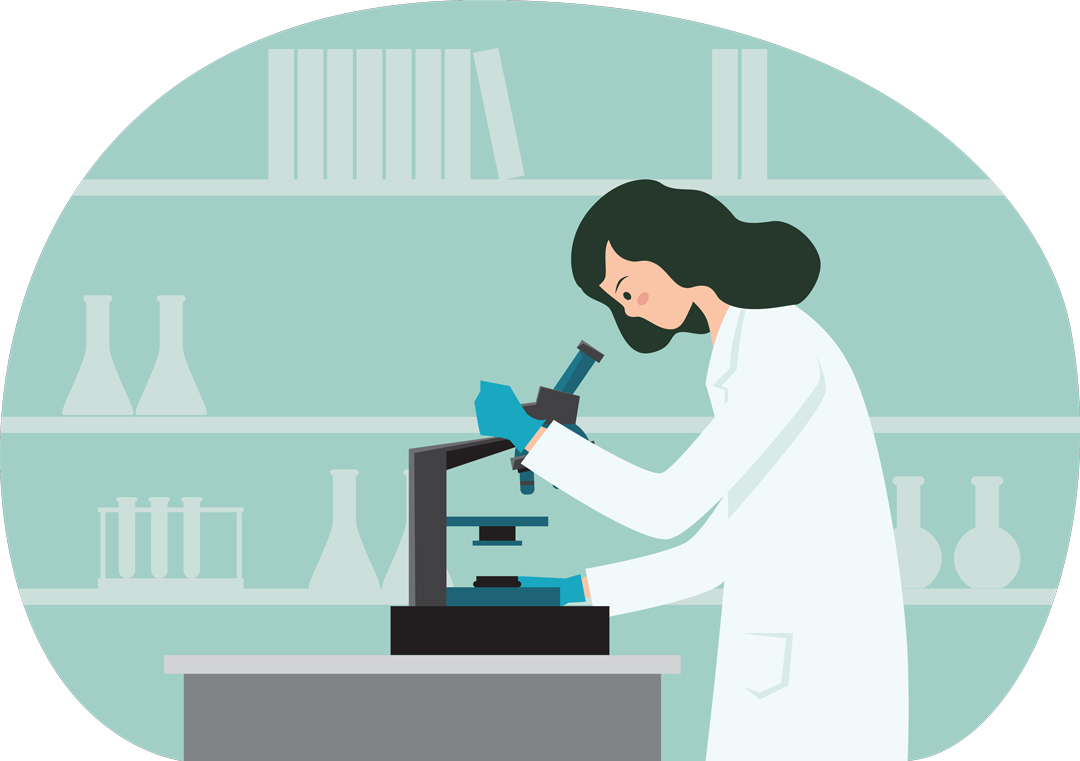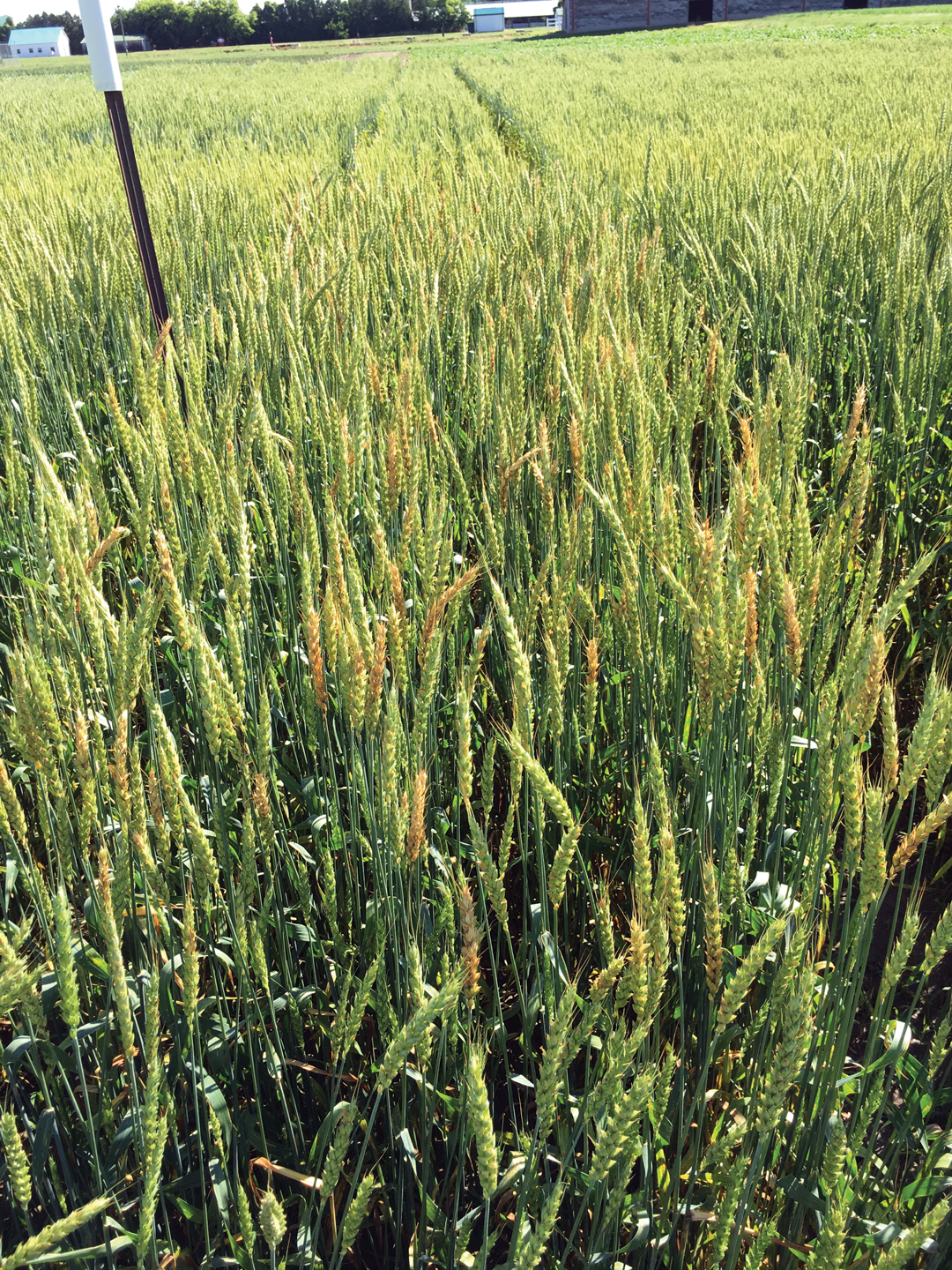RESEARCH PROJECT ROUNDUP
BY DAVID SIMBO
The world’s food demand is increasing, but its supply of agricultural land is not. The challenge faced by the farming industry is to increase productivity, improve food security and boost farm income on a land base that is fixed, or in some cases, shrinking. One of the best strategies to address all these related demands is to encourage innovative scientific research.
In 2020, the Alberta Wheat Commission (AWC) will invest about $5.5 million in the area of research. Similarly, Alberta Barley may invest up to $500,000. Although the AWC spends significantly more than its sister commission in this area, research represents the biggest part of both commissions’ budgets. These investments align with their missions to advance the interests of their members through leadership and investment in innovative research and development.
The research priorities of the commissions are set by their respective research committees in consultation with farmers. Research projects that are chosen for consideration typically address the needs and challenges farmers experience in their operations. These are then sent for peer review to ensure their methodology is sound and will deliver quality results.
Following peer review, decisions are made as to which projects will receive financial support. As a member of the Agricultural Finding Consortium (AFC), AWC and Alberta Barley co-operate with other crop commissions and funding agencies covering project costs. AFC’s 12 member organizations take a team approach in supporting agricultural research and development. Splitting the cost of a given project between multiple partners makes the process more economical for each one.
Among the many projects now being supported by AFC, three are being conducted by research scientists at Agriculture and Agri-Food Canada’s Lethbridge Research and Development Centre.
A study of beneficial insects is being undertaken by researcher Haley Catton. It is focused on those that eat insect pests, pollinate crop plants, eat or destroy weed seeds and contributes to nutrient cycling in the ecosystem.
A vast majority of the insect species that inhabit farm fields are not considered pests as they’re not harmful to crops. Some of these, in fact, may be very beneficial to farmers. Unfortunately, the control products that kill pests may also impact beneficial insects. Though the benefits many of these insects provide may be known to scientists and farmers, the true value of these positive services has not been adequately quantified.
The study is intended to establish the economic and ecological value provided by beneficial insects. Such information will help farmers make better insecticide application decisions to improve integrated pest management on their farms.
André Laroche is leading a project studying stripe rust resistance in wheat. Its goal is to renew the effectiveness of a defeated and currently ineffective resistance gene no longer effective against the stripe rust pathogen. There is a limited number of resistance genes now effective against stripe rust and the pathogen that causes the disease is constantly evolving. Because it may defeat currently effective resistance genes, more must be incorporated in wheat breeding. The deployment of new stripe rust resistant genes in wheat germplasm will reduce the cost of wheat production as it may shrink pesticide costs. Diminished pesticide use may in turn produce environmental benefits.
Led by Claudia Sheedy, a third project will study the impact of pesticide on the soil microbiome under cereal production. It will identify microbes thriving under pesticide use and investigate their potential as pesticide degraders.
Pesticides protect crops, boost yield and ensure food security, but their residues cause concern. Identifying and multiplying microbes capable of degrading them may protect ground water and the environment without affecting farm operations and profitability. This may also provide a degree of environmental licence for Alberta’s wheat industry.
In staying true to AWC’s mission to increase the long-term profitability of wheat through innovative research, the sustainability of our agricultural production system can’t be overlooked.
THE PROJECTS
GrainsWest spoke with the researchers heading the three projects mentioned on the previous page that are being carried out at Agriculture and Agri-Food Canada’s Lethbridge Research and Development Centre.
Research project: Beneficial insects in Prairie crops
GrainsWest: What problem is this research project working to solve?
Haley Catton: This project will focus on the economic and ecological value of biological pest control by beneficials. Results will help determine the hidden costs of insecticide use, guiding producers in making optimal insecticide use decisions in integrated pest management.
GW: What is unique about this project?
HC: This project will start filling a critical knowledge gap for Prairie producers on how best to manage pest insects while giving consideration to beneficial insects in farming operations. It will initiate the process of assigning economic value to the beneficial insects that provide free pest control services and, in the long-term, will reduce unnecessary pesticide use. It will also identify key knowledge gaps to direct future research.
It is a leadership initiative from a large research network of Prairie crop entomologists. We strongly believe that the value of beneficial insects must be quantified to be better appreciated and better integrated into field crop pest management.
GW: How may this research project benefit farmers?
HC: Producers lack information on the value and vulnerability of biological pest control by beneficial insects, and therefore incur hidden costs with insecticide use. Our long-term goal is to give producers the tools they need to make the best and most informed decisions for their farm operations.
Research project: Pesticide impact on soil microbiome
GW: What problem is this research project working to solve?
Claudia Sheedy: We are hoping to help protect water resources from pesticide contamination via the development of mitigation measures. We have learned that microbes excel at pesticide degradation. Our objective is therefore to discover microbes—bacteria, fungi—which can degrade pesticides frequently used in cereal production.
GW: What is unique about this project?
CS: It couples genomic, soil and pesticide research into one applied project. It is the first bio-augmentation project in Canada as far as we know, and it is the first project of its kind dedicated to cereal production.
GW: How may this research project benefit farmers?
CS: While farmers have to use pesticides to control pests—weeds, insects, fungi—this research can demonstrate how using pesticides may result in a positive outcome, other than crop protection, by generating and using new knowledge that can help Canadian growers prevent water contamination by pesticides.
Research project: Upcycling a defeated disease resistance gene of wheat
GW: What problem is this research project working to solve?
André Laroche: In 2000, we saw the appearance of a new race of stripe rust that was more aggressive. The pathogen has evolved and it is no longer recognized by the resistance gene called Yr10, and it can invade the plant. We want to modify the gene to again be effective against stripe rust.
GW: What is unique about this project?
AL: We are using a gene we had previously characterized. We know about the complete sequence of the gene and where and when it is expressed. From there, we can modify it and see if we can develop a variant gene that will be efficient. We could also use different variants together to hold down stripe rust pressure. This would open the door to all the other genes that have been defeated that then could be modified. That would be a simpler and faster way to bring novel genes into wheat.
GW: How may this research project benefit farmers?
AL: It’s known genetic resistance is the most efficient, the cheapest way for farmers to protect their crops. To be able to bring in genes that are resistant, to build a strong resistance level in all classes of wheat, this will directly benefit farmers.







Comments